Acorns may be coming into season but they are not a settled foraging topic. There are many areas of disagreement.
When can you harvest acorns? Generally they are ready in the fall — now — but a more helpful answer is when they are on the ground and or when they will let go of their cap when you pick them. This means you will get a mixture of brown and green acorns. But as long as they have or will let go of the cap you can use them. Which species are better is a matter of great debate, or even which family. Are the red oaks better than the white? Which family has more tannins? There are wide variety of opinions. We do know red oak acorns stored for a few years than white oaks. One other difference that no matter how long you leach them red acorns will still retain a bit of pinkness.
Method of preparation varies greatly with some camps hostile to other views. Entire books have been written just on how to rid the acorns of their irritating tannins. You can use cold water, hot water, fast running water even lye. You can bury them in a river bank or find trees with almost tannin-less acorns. (I know of one in Lecanto, Fl. at the Greek church there. )
Generally one prefers larger acorns to smaller one because you get more nut meat for about the same amount of work. Also the more orange the acorn’s flesh the more tannins it will have and the more work will be needed to leach it. What I find interesting is that it is apparently difficult if not impossible to get create a species of oak with acorns without tannins. I have heard reports of such species now and then but very little that is credible. More to the point humans have lived off acorns for so long if it were possible to create a tannin-less acorn it probably would have been done long ago. You can read more about acorns here.
Many years ago I was coaxed into getting a beer at a small eatery in Tampa’s Ybor City. The beer was not memorable but the brick wall on one side of the outdoor patio was. It had a vine I had never noticed. It took awhile but I identified it as a Creeping Fig (and many other names.) It is also something of a chameleon: The young vine on first glance does not look much like the old vine so one can indeed find it and not know you have found it. Also given the right support — such as a strong fence — the vine can cover the entire fence to the extent the vine looks like a long line of shrubs. But then it produces green fig-like fruit. Only the sap of them makes it barely into the edible realm. To read more about the Creeping Fig go here.
A few times every year one discovers another wild edible. Often it’s an ornamental imported to fancy up flower beds or landscaping. But I leaned of a new one lately from a friend — thank you Janice —and the species is also native to the warm areas of the United States: The Jewels of Opar, Talinum paniculatum. (tah-LINE-uhm puh
Upcoming Foraging Classes:
Sunday, October 2nd, Bayshore Live Oak Park, 2200 East Lake Road, Port Charlotte, 9 a.m. Cross street Ganyard.
Sunday, October 9th, Dreher Park, 1200 Southern Blvd., West Palm Beach, 33405. 9 a.m.
Sunday, October 16th, Florida State College, south campus, 11901 Beach Blvd., Jacksonville, 32246. 9 a.m.
To learn more about the classes go here.
Last week some friends and I visited Fort Desoto Park in St. Petersburg to check it out as a possible location for foraging classes. The first thing you should know about the park is that it is smothered in poison ivy. It is virtually everywhere there is not a road, path, lawn or beach. Do not reach for anything anywhere without first looking for poison ivy. It’s the most dense concentration of the species I have ever seen.
We started at the only fishing pier and the first thing you notice is a mother load of fruiting Sea Grapes. Large, small, short and tall. You can still find some now but next August put it on your calendar to visit the park and gather sea grapes in abundance. Also in abundance are sand spurs and they cover most of the upper beach along with the famine food Beach Morning Glory aka Railroad Vine aka Goat’s Foot, Ipomoea pes-carpae. Sand spurs are sandlot sadists — take needle nose pliers with you — but if prepared correctly are nutritious and tasty. The cooked root, stem and leaves of Beach Morning Glory can be eaten in small quantities. Otherwise they become medicinal.
Among other edibles we saw were some ground cherries in season, Smilax, Sea Oats, , native Blue Porterweed, Crowsfoot Grass, Panic Grass, fruiting Opuntia, and a blown over cultivated Chaya Tree, which is related to our Spurge Nettle. It was a cultivated Chaya because the leaves did not sting me. Half the leaves can be removed from a Chya and it will survive. The wild ones do and some of the cultivated ones as well. But there are some cultivated Chaya which do not sting. The most unusual find of the day was a persimmon hurst. I have in some 30 years of foraging in Florida seen only one other stand of persimmons.
Want to identify a plant? Looking for a foraging reference? Do you have a UFO, an Unidentified Flowering Object you want identified? On the Green Deane Forum we chat about foraging all year. And it’s not just about warm-weather plants or just North American flora. Many nations share common weeds so there’s a lot to talk about. There’s also more than weeds. The reference section has information for foraging around the world. There are also articles on food preservation, and forgotten skills from making bows to fermenting food. You can join the forum by clicking on the button on the upper right hand side of this page.
All of Green Deane’s videos are available for free on You Tube. They do have ads on them so every time you watch a Green Deane video I get a quarter of one cent. Four views, one cent. Not exactly a large money-maker but it helps pays for the newsletter. If you want to see the videos without ads and some in slightly better quality you can order the DVD set. It is nine DVDs with 15 videos on each. Many people want their own copy of the videos or they have a slow service and its easier to order then to watch them on-line. They make a good gift for that forager you know. Individual DVDs can also be ordered. You can order them by clicking on the button on the top right of this page or you can go here.
This is Newsletter 226.
If you would like to donate to Eat The Weeds please click here.

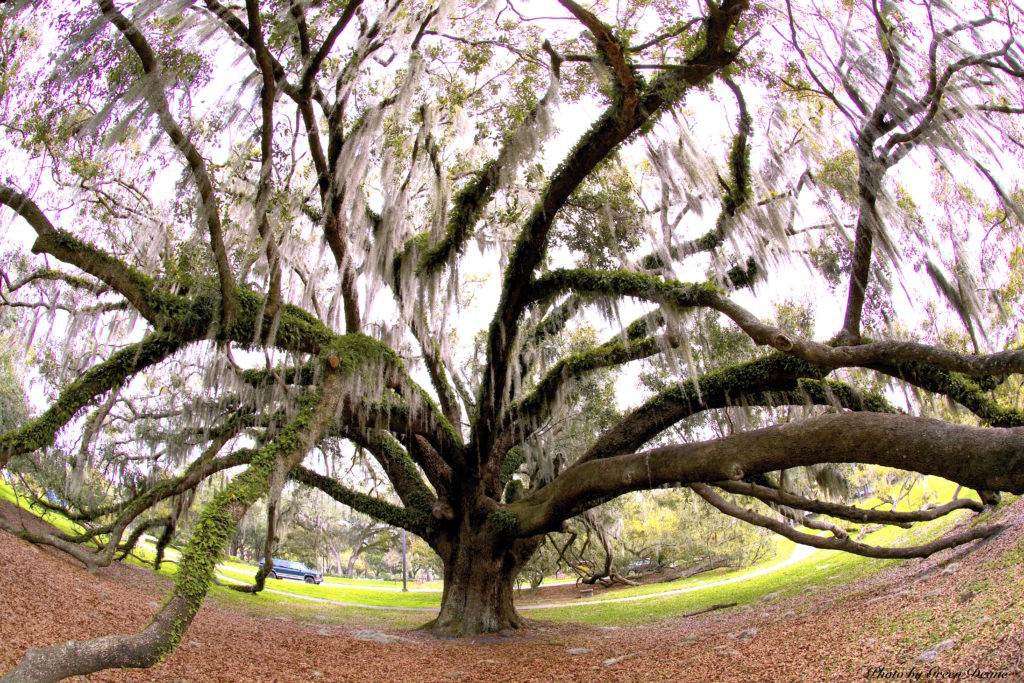
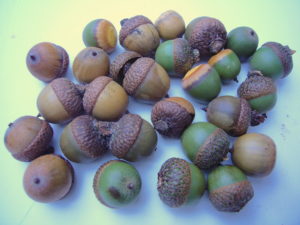
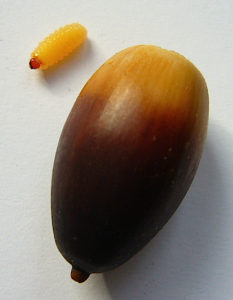
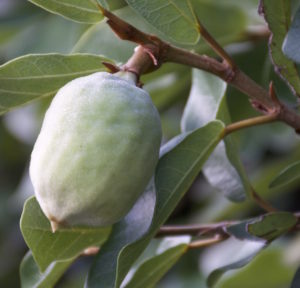
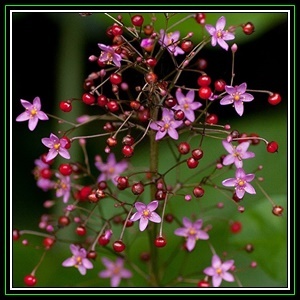
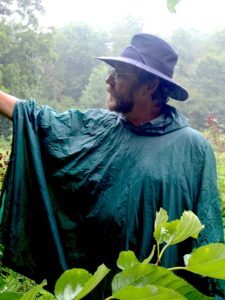
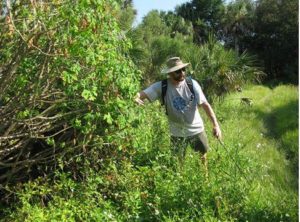
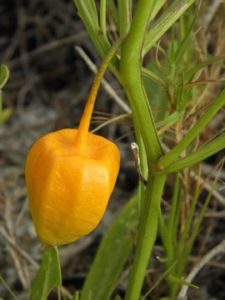
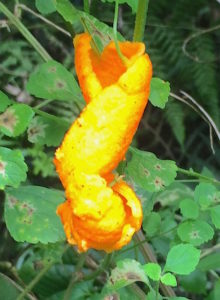


Arthur Haines, botanist and primitive kills instructor in Maine, has an excellent video on YouTube about using acorns for food. Haines provides detailed, step-by-step instructions on a simple and easy method to get the tannin out of the acorn, so they can be used for food.
An easier way to eat acorns is to run them through pigs/hogs first – and then eat the pork, of course! Or deer, or goats. The famous acorn-fed hams of Spain are unbelievably expensive, but more small-scale farms are rediscovering the natural relationship between swine and oak trees.
Thank you so such for identifying the plant jewel of Opar, talium Pandiculation. I live in central Louisiana and have them popping up everywhere. Now I will add in my cooking. If anyone wants some I will mail the seeds
I love Jewels of Opar – I just toss them in all my salads. They spread easily. I have a group of 4-5 persimmon trees. Does that make a hurst?
First time to know of a vine fig. Mine is a common species grown from seeds and transplanted – now 2years old and fruited for the 2nd time . T he problem is fruits do not keep attached till ripening.